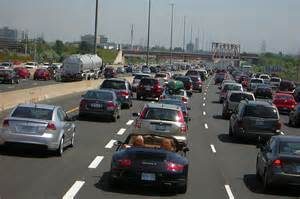 The rapidly changing landscape of legal marijuana use has caused confusion among employers who have a strict no-drug policy in their workforces. After all, the burden is on the employer to provide a safe workplace for the other employees as well as for clients. How are they to do this when states make medical marijuana use legal and some sates even allow its recreational use? First, employers should realize that they are not obligated to allow drug use of any type while an individual is on the clock or at your workplace. However, beyond that, they laws get cloudy. Here are some legal guidelines to help employers navigate the tricky world of marijuana in the workplace.
The rapidly changing landscape of legal marijuana use has caused confusion among employers who have a strict no-drug policy in their workforces. After all, the burden is on the employer to provide a safe workplace for the other employees as well as for clients. How are they to do this when states make medical marijuana use legal and some sates even allow its recreational use? First, employers should realize that they are not obligated to allow drug use of any type while an individual is on the clock or at your workplace. However, beyond that, they laws get cloudy. Here are some legal guidelines to help employers navigate the tricky world of marijuana in the workplace.
Drug Testing
When regards to drug testing, employers in states where marijuana is legal have an additional burden. A positive drug test by an employee is typically not enough to take corrective action. Instead, employers must document additional criteria proving that the employee used marijuana while performing their job. As more and more states legalize marijuana use, companies may move away from random drug testing and toward random impairment testing. This would involve testing designed to determine if an employee is fit to perform their job or if some level of drug impairment exists at a given time.
No Tolerance Rules
Employers who have a strict “no drug” policy have nothing to worry about. They still have the ability to discipline or terminate employees who are caught with marijuana on them while at work or who display obvious signs of impairment due to drug use at work. Additionally, court cases thus far have ruled on the side of employers. Judges have consistently ruled that using legal marijuana protects individuals only from legal repercussions not from employer actions.
Hiring
Hiring is another tricky area. Employers who operate in Arizona, Connecticut, Delaware, Maine and Rhode Island are not allowed to disqualify job applicants simply because they use marijuana for medical purposes. However, companies can and should provide applicants who disclose this information with a detailed company drug policy explaining the actions taken if they use marijuana while on the job.

 Chemicals are abundant in most workplaces, and even those that don’t use or store hazardous chemicals still represent a risk to employees. Even common cleaning supplies can pose a threat if used incorrectly. In fact, 32 million people are injured each year from chemical hazards in the workplace. For this reason, employers must remain vigilant for chemical hazards. Proper storage, labeling and training of employees will help to ensure that workers aren’t injured on the job.
Chemicals are abundant in most workplaces, and even those that don’t use or store hazardous chemicals still represent a risk to employees. Even common cleaning supplies can pose a threat if used incorrectly. In fact, 32 million people are injured each year from chemical hazards in the workplace. For this reason, employers must remain vigilant for chemical hazards. Proper storage, labeling and training of employees will help to ensure that workers aren’t injured on the job.









